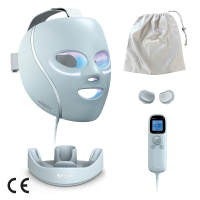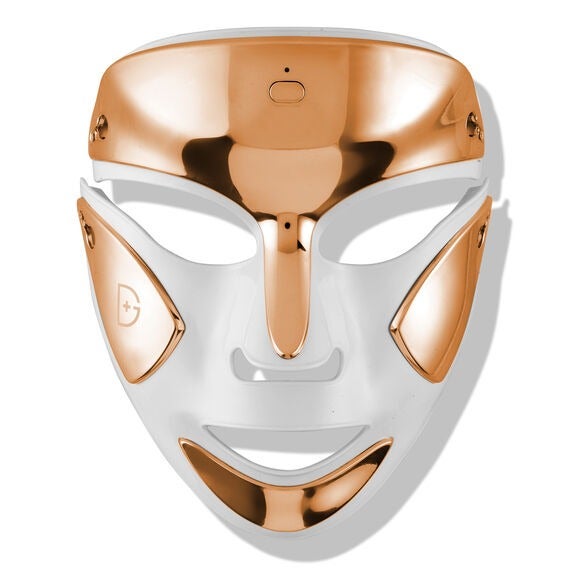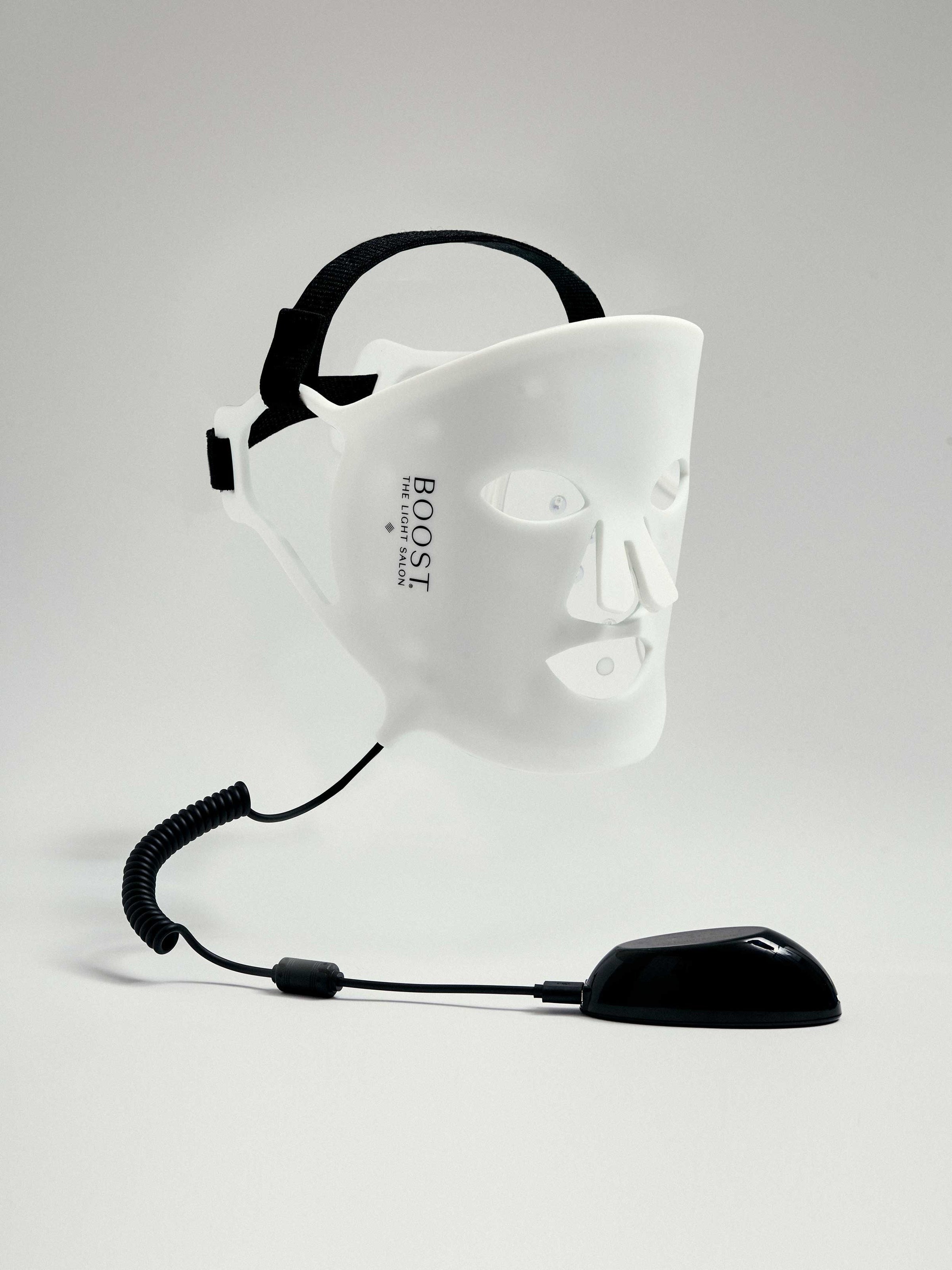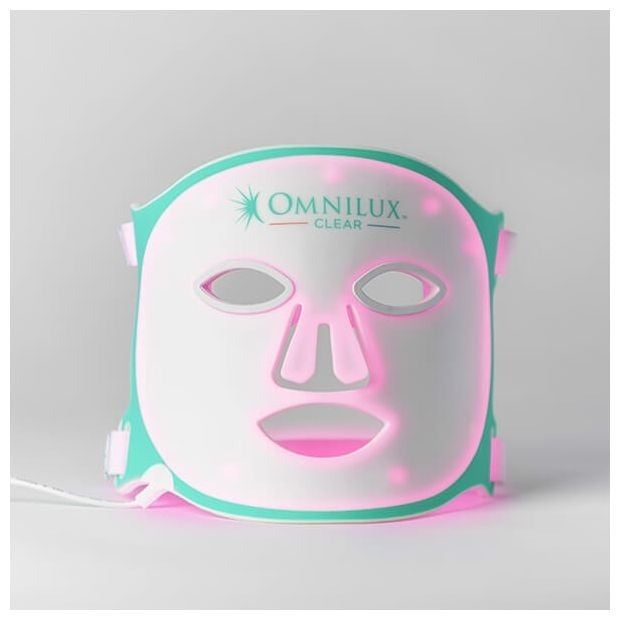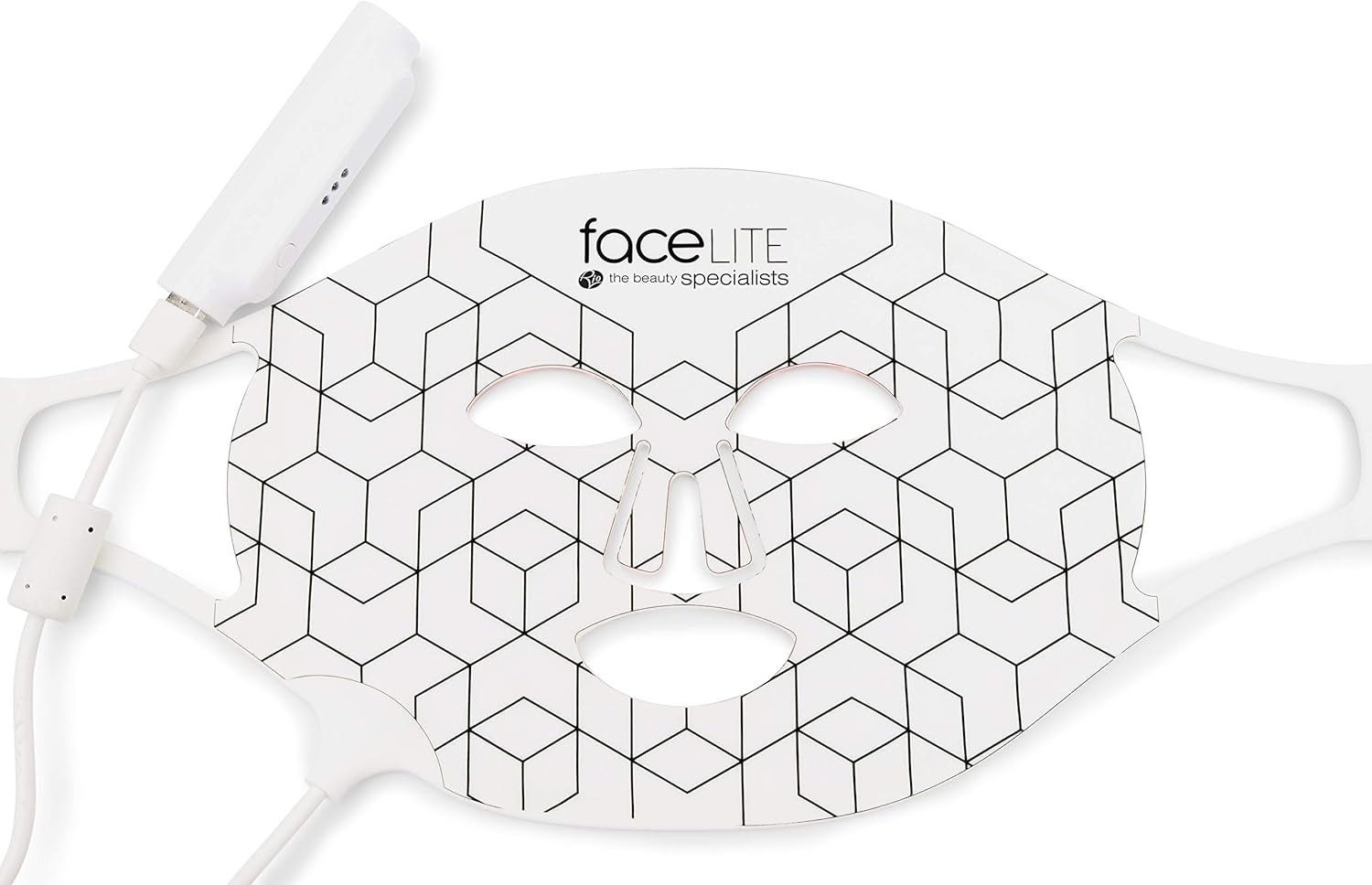Why Does Everyone Have An LED Mask Right Now?
All linked products are independently selected by our editors. If you purchase any of these products, we may earn a commission.
From celebrities and doctors to historians and influencers, the people I follow on Instagram come from all walks of life. But lately, one thing these very different people seem to have in common is an affinity for LED face masks.
I find it pretty impossible to scroll through IG stories without coming across a selfie of someone bathing in the all-encompassing glow of red light. There was a time when LED masks were considered too high tech to have at home but it’s safe to say that they are no longer the preserve of dermatology clinics.
Despite the often hefty price tag, LED has become de rigueur among both skincare enthusiasts and novices. As a beauty director, I’m no longer fielding questions about retinol or the best sunscreens; instead, everyone wants to know about red light. So what exactly are the skincare benefits? Are at-home devices as good as the ones that the experts spend thousands on? And — in this economy — are LED masks really worth the money?
AdvertisementADVERTISEMENT
What are LED face masks — and how does red light work on skin?
Though they resemble something out of a sci-fi movie, the science behind LED masks doesn’t have to be complicated. Dr Jonathan Kentley, consultant dermatologist and British Skin Foundation spokesperson, explains that LED masks typically emit a mix of red light, infrared light and blue light. They are all different wavelengths on the electromagnetic spectrum. “They work via a mechanism called photobiomodulation,” says Dr Kentley, “and during this process, light energy is absorbed into the skin.”
All light isn’t created equal. “Light is absorbed most strongly in the red light and infrared light range,” he adds, “therefore most masks emit light in [this] range.” When such light is absorbed by the skin, it activates “cellular metabolism”, says Dr Kentley, which is the process that skin cells go through when shedding and regenerating.
What are the main skincare benefits of LED face masks with red light, blue light and infrared light?
For the privilege of clearer, smoother skin, you can expect to pay up to £600 for an at-home LED mask. Still, the anecdotal evidence in their favour is stacking up. I asked a handful of friends, beauty editor colleagues and my little black book of experts for their thoughts, and the volume of responses I received was overwhelming.
Fresher, more glowing skin was the main benefit; one respondent even credited her LED mask with keeping her skin “Botox-free”. But a reduction in acne and acne scars, and the ability to speed up the healing process of breakouts, were also among the most popular replies. Freelance beauty journalist Ata-Owaji Victor attributes her clearer skin to both professional and at-home LED treatment, citing the Ssense Beauty LED Wand Enhancer as a great tool to use on hormonal breakouts. So what does the science say?
AdvertisementADVERTISEMENT
Red light in particular has shown to be effective in treating acne by targeting oil-producing glands, killing acne-causing bacteria, reducing the number of inflammatory spots and healing skin, explains Dr Kentley. Light emitted from LED masks has also been shown to activate fibroblasts in the skin, says Dr Kentley, which are the cells that produce collagen and elastin. Think of these as scaffolding, which keeps skin smooth, supple, strong and hydrated. It’s why most LED brands claim to offer “anti-ageing” or “pro-ageing” benefits.
Then there’s blue light. “Blue light has also been used in the treatment of acne, as it is absorbed by chemicals produced by bacteria, making it toxic to the acne-causing bug cutibacterium acnes,” Dr Kentley adds. However, there is much less evidence for the use of blue light in treating the skin as opposed to red or infrared light, he explains. Sure enough, most studies focus on red light and ageing or reducing inflammation.
How do you use an LED face mask — and are we using them wrong?
While Dr Kentley reports that there is no concrete advice as to the best protocol for LED therapy, he says that most studies have used treatments two or three times per week for one to four months. As for at-home versions? Among the people I asked, the most popular masks were the Current Body LED Light Therapy Face Mask: Series 2, £399.99, The Light Salon Boost LED Face Mask, £395, and Dr. Dennis Gross DRX Spectralite Facewear Pro, £465. And the consensus was clear: You have to be in it for the long haul.
AdvertisementADVERTISEMENT
Aesthetician and skincare expert Alicia Lartey reports that she and her clients usually notice reduced redness and an “instant glow” after just one go (usually the result of any inflammation subsiding). But other benefits like a reduction in breakouts and fine lines are only really possible with regular use. How often you use your LED mask is wholly dependent on your chosen model — so it pays to follow the instructions closely.
Additionally, some brands state that using skincare first can render LED ineffective as it creates a barrier. “When using LED, you’re meant to have nothing on your skin at all. This is particularly true for blue light. At most you can wear a hydrating serum, but I’d recommend cleansing your skin and doing your LED treatment, then following up with the rest of your skincare routine,” explains Lartey. “You don’t want anything on your skin that will increase photosensitivity,” which is basically sensitivity to light (think high-strength exfoliating acids). Helpfully, Solawave, for example, has created a line of skincare that you can use with its LED masks.
What’s the difference between at-home LED masks and those in dermatology clinics?
Not all LED devices are made the same. “Most skincare clinics use devices such as the Dermalux Flex MD,” explains Lartey. A dome-shaped portable machine that boasts blue, red and infrared light at varying wavelengths, it is medically CE certified, which means that it meets the European Union’s health and safety requirements. It's also expensive, coming in at just under £2,000. “The main difference [between this and an at-home mask] would be the number of bulbs and the variety of wavelengths,” Lartey says.
AdvertisementADVERTISEMENT
Dr Kentley adds that devices like these, which feature a similar LED canopy, are typically more effective than at-home masks. “They have uniform illumination, higher energy levels and can treat larger areas,” he says. Light from at-home LED masks tends to be less uniform than that emitted by in-clinic devices. “This means that some small areas are treated more intensely than others,” says Dr Kentley. At-home masks also have a typically lower energy. “As such, more treatments may be required,” says Dr Kentley. “[Overall] at-home devices are more convenient and cost-effective to use, and are generally considered safe,” he concludes.
Lartey believes that at-home devices — when used properly and consistently — can be just as effective as professional treatments. “LED devices would be my personal first choice in a skincare device as there is data to back up product claims,” says Lartey, who rates the Dermalux Flex MD. If you’d rather spend less, she also uses and likes the new Shark CryoGlow, £269.99. “This also contains all three light colours [blue, red and infrared] as well as an LCD display screen to monitor your treatments, a comfortable strap to keep the mask on your head and a really cool feature that I haven't seen on other devices: under-eye cooling pads,” says Lartey.
Are LED masks safe?
Lartey describes LED devices and masks as “relatively harm-free” — so does that mean there’s room for injury? If you’ve ever had a facial with LED light therapy, it’s likely that your aesthetician gave you protective goggles to wear; depending on the machine, LED light can be intensely bright. At-home LED masks sometimes require similar protective eyewear — but not always.
AdvertisementADVERTISEMENT
A 2020 case report involving a wraparound LED face mask concluded that retinal damage can occur with prolonged exposure to blue light specifically, but further evidence to support this claim is sparse. Studies on the side effects of red light are also few and far between but most at-home LED masks feature cut-outs for eyes to minimise exposure to light. Both the Current Body and Shark masks also come with protective eye inserts. Experts advise closing your eyes while wearing an LED mask, rather than going about your daily chores, working or watching television.
What’s more, red light might not be suitable for everyone. Dr Kentley says that in at-home masks, LED lights tend to be closer to the skin, which can increase the risk of potential side effects such as overheating and pigmentation. The American Academy of Dermatology Association also reports that red light may increase sensitivity and hyperpigmentation in people with darker skin. With this in mind, it’s important to check in with a qualified skincare professional if you’re interested in using an at-home mask.
What are the best LED face masks?
Dr Kentley argues that if you are looking for an “extra boost” to your complexion while sitting on the sofa for 30 minutes, an at-home LED face mask could be well worth the investment. When narrowing down your search he’d suggest focusing on companies that have put time and research into their development.
My top pick would be the Current Body mask, mainly thanks to its mix of different lights (red and near-infrared light, which penetrates deeper into the skin than infrared light) and its flexibility. Also try the Omnilux Clear Red & Blue LED Light Acne Therapy, £348, a similarly flexible (read: comfortable) mask with both red and blue light to help heal breakouts. Anthonia Ademuyiwa of London-based, science-focused skin studio Iṣẹdas, also rates the Rio FaceLITE Beauty Boosting Light Therapy LED Face Mask, £349 (currently on sale for £247.48), for use at home. This, too, features both red and near-infrared light.
AdvertisementADVERTISEMENT
One LED light device that doesn’t get Dr Kentley’s vote of confidence is an LED wand. “[These] are only able to treat a very small area of the skin at a time and therefore may not be very practical,” he says. Lastly, if you’re using an at-home LED mask — especially for breakouts — it’s important to clean it after each use. (An easy solution is to use an alcohol wipe.)
Are LED face masks a status symbol?
From the clean girl aesthetic to the internet’s obsession with “status skin”, it’s obvious that clear, wrinkle-free skin is considered to be a badge of prestige. Considering the price, you could say that owning — and showing off — an LED mask is the beauty equivalent of carrying around the latest It bag. Certainly, Lartey believes that LED masks have become a status symbol lately. “Anything extra or outside the [skincare] basics is a luxury, especially in this economy,” she tells me. According to Dr Kentley, LED masks are by no means necessary — even if they are taking over social media. Take acne and fine lines, for example. Ask any dermatologist and they’ll likely tell you that you can achieve similar results using cheaper skincare products like retinoids or exfoliating acids, which resurface skin, reducing fine lines and unclogging pores.
But here’s the thing: It’s easy to go overboard with potent ingredients like these. That’s before you consider whether or not it’s safe to combine them with other powerful additions. For those on the hunt for clearer, fresher skin without the confusion (or potential for irritation), an at-home LED mask could be a better, more simple solution. Provided that you’re using it regularly — and as instructed — the expert consensus is that it’s certainly possible to reap the rewards. All in the comfort of your own home, no less.
AdvertisementADVERTISEMENT







